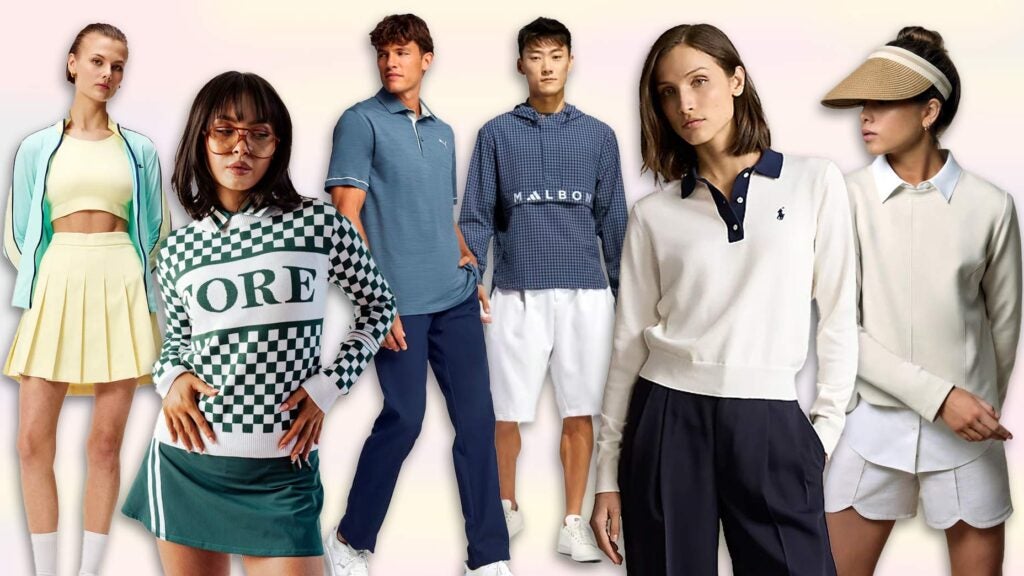How Sustainable Fabric Trends Are Shaping Branded Clothing Collections
How Sustainable Fabric Trends Are Shaping Branded Clothing Collections
Blog Article
Recognizing Clothes: The Importance of Textile Options in Your Closet
The choice of fabric in apparel plays a critical function in both looks and capability. Various products provide varying degrees of breathability, comfort, and toughness, directly affecting the wearer's experience. Comprehending these nuances can boost one's wardrobe substantially. Several forget exactly how these selections can influence not simply individual design, but additionally sustainability. What fabric decisions could redefine your wardrobe and straighten it with both style and duty?
The Duty of Material in Style and Functionality

Common Fabric Types and Their Qualities
When choosing apparel, understanding the qualities of usual textile kinds is crucial for making informed selections. Cotton, a widely-used natural fiber, is known for its breathability, soft qualities, and flexibility, making it suitable for sportswear and everyday garments. Linen, one more all-natural alternative, flaunts excellent moisture-wicking buildings and a distinct appearance, perfect for warm climates.Wool, commonly favored for its warmth and durability, varies in fineness; merino woollen is soft against the skin, while coarser kinds are used for outerwear. Synthetic fabrics like polyester and nylon supply sturdiness and resistance to creases, making them prominent for activewear and traveling garments. Lastly, blends, which combine all-natural and artificial fibers, can boost performance while preserving comfort. By identifying these textile qualities, individuals can select garments that aligns with their way of life and visual choices.
Breathability and Convenience: Picking the Right Fabrics for Different Environments
Picking the right materials for various climates can substantially boost convenience and overall wearability. Breathable products are vital in hot climates, as they allow air circulation and dampness dissipation. Fabrics such as cotton, linen, and moisture-wicking synthetics efficiently draw sweat far from the body, maintaining the user cool and dry. On the other hand, in chillier environments, thicker textiles like wool or fleece supply insulation while retaining breathability, making certain heat without overheating.Additionally, the option of material weight plays a vital function; lightweight fabrics are more suitable for summertime, whereas larger options are matched for wintertime wear. Recognizing the special properties of each textile enables individuals to clothe properly for differing weather. Eventually, picking comfy and breathable textiles customized to certain environments can greatly boost everyday comfort and improve the general experience of putting on clothes.
Durability and Care: How Textile Influences Longevity of Your Closet
Picking the right materials can substantially impact the sturdiness and care requirements of a closet. Fabrics such as cotton and polyester are known for their strength and ease of maintenance, making them suitable for day-to-day wear. On the other hand, delicate materials like silk and lace need more cautious handling and specialized cleaning approaches, which can boost the moment and initiative needed for care. Branded Clothing.Durability is additionally influenced by the textile's weave and coating; tightly woven textiles tend to resist wear and tear much better than loosely woven options. Furthermore, synthetic blends usually give improved sturdiness, integrating the most effective qualities of several fibers.Understanding the treatment instructions for every textile is essential, as incorrect cleaning or drying can cause early wear. Inevitably, choosing resilient materials can cause a longer-lasting closet, decreasing the frequency of replacements and adding to a much more lasting style selection
The Influence of Fabric on Fit and Silhouette

Lasting Textile Options: Making Eco-Friendly Choices
The impact of fabric prolongs beyond fit and shape to encompass ecological factors, triggering an expanding rate of interest in lasting fabric choices. Green fabrics, such as natural cotton, hemp, and Tencel, are gaining grip amongst consumers who focus on sustainability in their wardrobes. These products are frequently created with fewer chemicals and water, reducing their eco-friendly footprint.Additionally, recycled materials, made from post-consumer waste, use an innovative option to the fabric market's contamination trouble. Brands increasingly embrace transparency in their sourcing techniques, enabling consumers to make informed decisions regarding their purchases.Choosing sustainable fabrics not only supports ethical techniques yet also encourages the apparel industry to take on more accountable production methods. As understanding of ecological concerns increases, individuals are prompted to show on the long-lasting effect of their material choices, promoting a motion in the direction of a much more lasting and ecologically conscious strategy to fashion.
Boosting Style: Just How Fabric Can Change an Outfit
While numerous may concentrate on color and cut when selecting an attire, the choice of textile plays an important function in boosting style and improving total appearance. Different products share unique state of minds and messages; as an example, silk radiates deluxe and elegance, while denim uses a casual, kicked back ambiance. The structure and drape of a textile can considerably modify the shape, with organized fabrics supplying a refined look and softer ones developing a much more fluid, relaxed aesthetic.Moreover, the weight of the fabric affects wearability throughout periods. Light-weight textiles like bed linen and cotton are ideal check out this site for summertime, while larger products such as woollen and velvet supply warmth and elegance in cooler months. Recognizing fabric residential or commercial properties, such as breathability and stretch, additionally encourages individuals to make informed choices that improve comfort without endangering style. Inevitably, the best fabric can change a clothing from common to remarkable, making it a vital factor to consider in any kind of wardrobe.
Regularly Asked Concerns
Just how Do I Identify the Material Material of My Clothing?
To recognize material material, one can check out care labels, conduct melt tests for fiber recognition, or speak with fabric swatches. These methods help set apart products, ensuring notified choices for apparel care and maintenance in everyday wear.
Can Fabric Selection Affect My State Of Mind or Self-confidence?
Material selection can substantially impact an individual's mood and confidence. Branded Clothing. Specific materials may stimulate feelings of convenience or sophistication, while others can feel limiting or uncomplimentary, eventually influencing self-perception and emotional wellness throughout the day
What Fabrics Are Ideal for Sensitive Skin?
For individuals with delicate skin, all-natural materials like bamboo, bed linen, and cotton are commonly recommended. These materials are breathable, hypoallergenic, and much less likely to create inflammation, making them appropriate options for convenience and skin health and wellness.
Just how Do I Appropriately Laundry and Take Care Of Different Fabrics?
To correctly clean and care for different fabrics, one need to take into consideration each product's specific requirements, consisting of temperature setups, cleaning agents, and drying approaches, ensuring longevity and keeping the fabric's initial high qualities for excellent use.
Exist Certain Fabrics for Athletic or Performance Put On?
Athletic or efficiency wear frequently utilizes fabrics such as nylon, spandex, and polyester. These materials are made for moisture-wicking, breathability, and adaptability, boosting activity and convenience during exercises while offering sturdiness and support. Alternatively, in colder environments, thicker materials like wool or fleece give insulation while maintaining breathability, making certain warmth without overheating.Additionally, the option of textile weight plays an important function; lightweight textiles are preferable for summer season, whereas larger options are matched for wintertime wear. In comparison, fragile materials like silk and shoelace he has a good point need even more cautious handling and specialized cleaning approaches, which can enhance the time and effort required for care.Durability is additionally influenced by the material's weave and surface; securely woven materials often tend to withstand wear and tear better than loosely woven alternatives. In comparison, rigid materials can limit motion yet provide a timeless, polished look.Moreover, the density and texture of the textile can affect the visual perception of body shape. The effect of textile expands past fit and shape to include environmental aspects, prompting a growing rate of interest in lasting material options. The texture and drape of a material can significantly alter the shape, with organized materials giving a sleek appearance and softer ones creating a more fluid, relaxed aesthetic.Moreover, the weight of the textile affects wearability throughout seasons.
Report this page